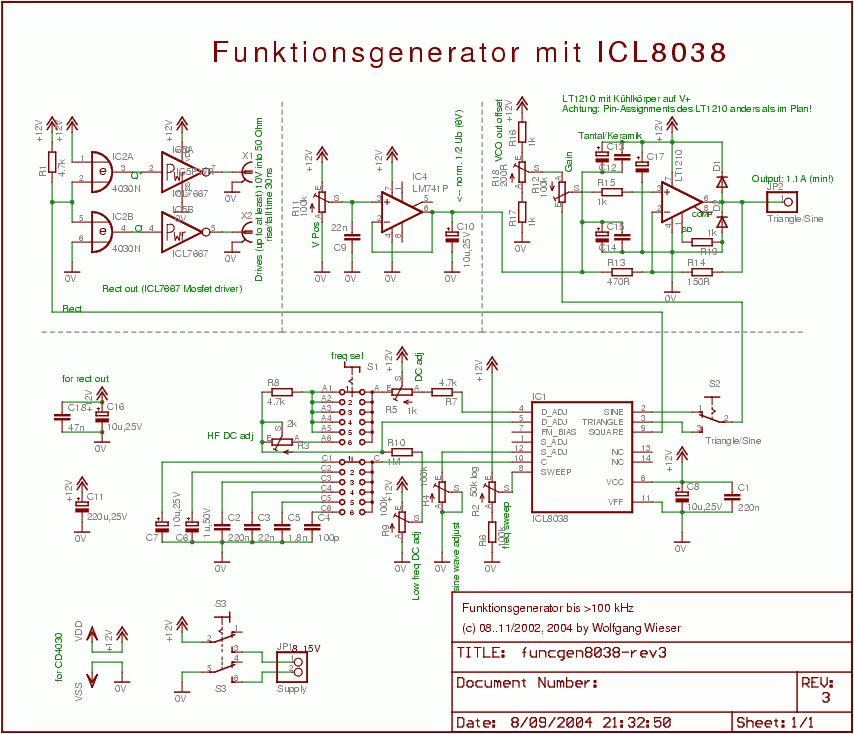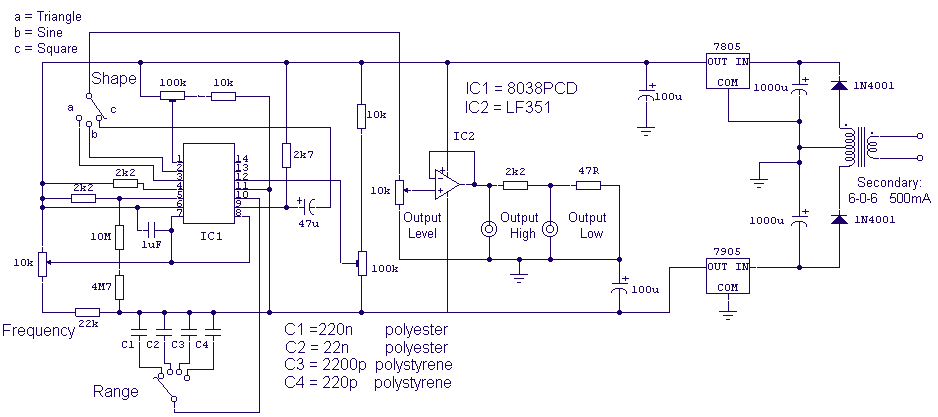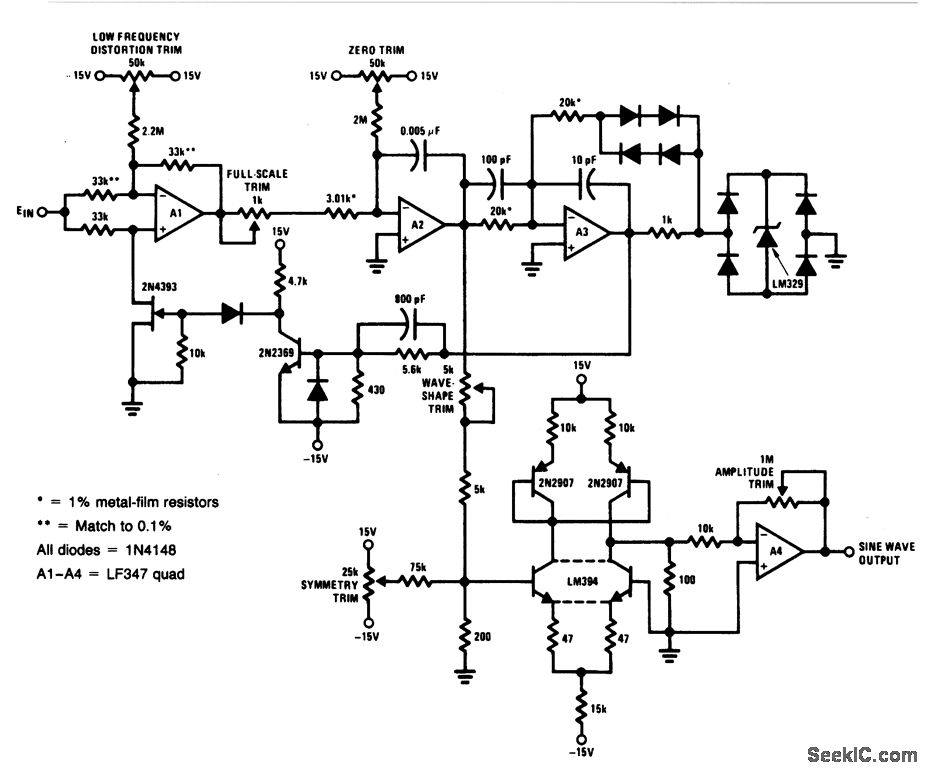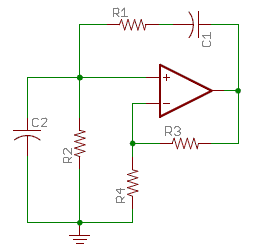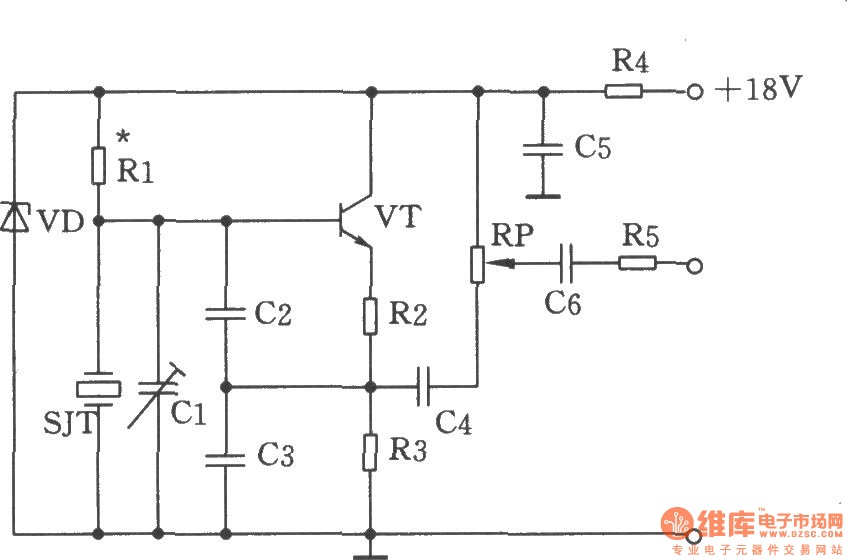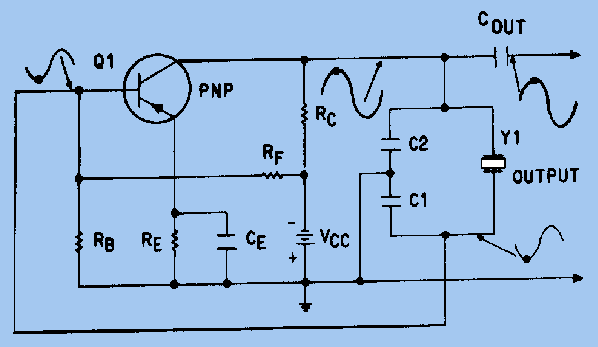
Oscillator IIV
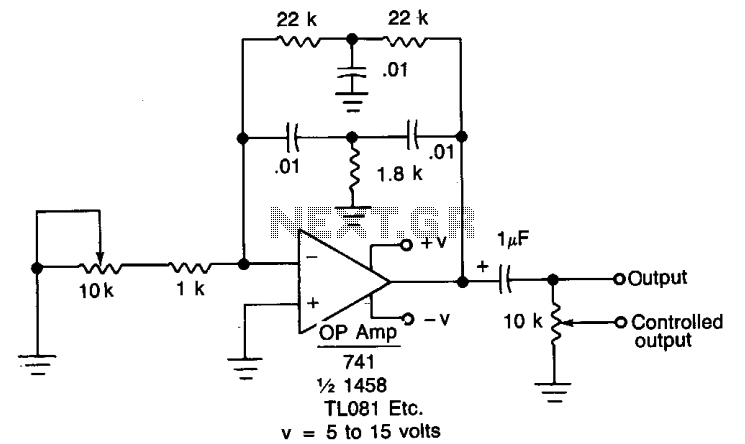
When the oscillator is connected to a DC circuit, a DC blocking capacitor should be connected in series with the potentiometer's wiper arm. For finer output control, a 10 kΩ potentiometer can be added.
In this circuit configuration, the oscillator generates an AC signal that can interfere with the DC circuit's operation. To prevent this interference, a DC blocking capacitor is utilized. The capacitor allows AC signals to pass while blocking DC components, ensuring that the DC circuit functions correctly without being affected by the oscillator's output.
The potentiometer serves as a variable resistor that can be adjusted to control the amplitude of the AC signal reaching the load. Connecting the DC blocking capacitor in series with the wiper arm of the potentiometer allows for fine tuning of the output signal. The addition of a 10 kΩ potentiometer enhances the control over the signal, enabling precise adjustments to the output level. This configuration is particularly useful in applications where signal integrity is crucial, such as in audio processing or signal conditioning circuits.
The overall design ensures that the oscillator can effectively interface with the DC circuit while maintaining the desired output characteristics, providing flexibility in signal management and control. Proper selection of the capacitor value is essential to match the frequency response of the oscillator, while the potentiometer should be chosen based on the required range of output adjustment. This setup emphasizes the importance of component selection and configuration in achieving optimal circuit performance. When the oscillator is connected to a dc circuit then connect a dc blocking capacitor in series with the potentiometer's wiper arm. If fine output control is desired, add the 10 potentiometer. 🔗 External reference
In this circuit configuration, the oscillator generates an AC signal that can interfere with the DC circuit's operation. To prevent this interference, a DC blocking capacitor is utilized. The capacitor allows AC signals to pass while blocking DC components, ensuring that the DC circuit functions correctly without being affected by the oscillator's output.
The potentiometer serves as a variable resistor that can be adjusted to control the amplitude of the AC signal reaching the load. Connecting the DC blocking capacitor in series with the wiper arm of the potentiometer allows for fine tuning of the output signal. The addition of a 10 kΩ potentiometer enhances the control over the signal, enabling precise adjustments to the output level. This configuration is particularly useful in applications where signal integrity is crucial, such as in audio processing or signal conditioning circuits.
The overall design ensures that the oscillator can effectively interface with the DC circuit while maintaining the desired output characteristics, providing flexibility in signal management and control. Proper selection of the capacitor value is essential to match the frequency response of the oscillator, while the potentiometer should be chosen based on the required range of output adjustment. This setup emphasizes the importance of component selection and configuration in achieving optimal circuit performance. When the oscillator is connected to a dc circuit then connect a dc blocking capacitor in series with the potentiometer's wiper arm. If fine output control is desired, add the 10 potentiometer. 🔗 External reference
